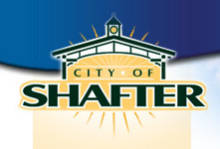Connected Communities in an Age of Digital Learning: Webcast Archive Available
On February 27, the New America Foundation presented the live webcast, "Connected Communities in an Age of Digital Learning: A Vision for a 21st Century E-rate Program."
The webcast addressing the modernization of the E-rate program is now archived and available to view.
As technology advances, schools must find ways to keep up. At the root of their success is connectivity in the communities. From the announcement:
Yet many communities lack robust Internet connectivity, which is a key prerequisite to using these tools. Libraries and schools across the country report that they do not have the necessary speeds and equipment to support the digital learning environments of today, let alone tomorrow. Sustaining and upgrading the Internet infrastructure that supports these community anchor institutions is critical. And in addition to physical infrastructure, these communities need investments in social infrastructure: support systems in and around community institutions that help facilitate digital literacy, support broadband access, and encourage meaningful broadband adoption.
The panel included experts in education, library science, and technology. Featured speakers were:





 The question is why they want faster connections. Only 20% say their current connection completely meets their need to conduct online testing and assessment applications - with another 44% saying it "mostly" meets those needs.
The question is why they want faster connections. Only 20% say their current connection completely meets their need to conduct online testing and assessment applications - with another 44% saying it "mostly" meets those needs.
 These gaps represent a tremendous opportunity for growth - communities should be building their own fiber-optic connections to connect these key institutions and ensure they will have affordable, fast, and reliable connections well into the future. By owning the network, these institutions will have greater control over future costs and their capacity to take advantage of even newer applications.
The FCC should favor locally owned networks to encourage self-reliance instead of never-ending subsidies to private carriers who have little incentive to lower prices and increase investment.
These gaps represent a tremendous opportunity for growth - communities should be building their own fiber-optic connections to connect these key institutions and ensure they will have affordable, fast, and reliable connections well into the future. By owning the network, these institutions will have greater control over future costs and their capacity to take advantage of even newer applications.
The FCC should favor locally owned networks to encourage self-reliance instead of never-ending subsidies to private carriers who have little incentive to lower prices and increase investment.
